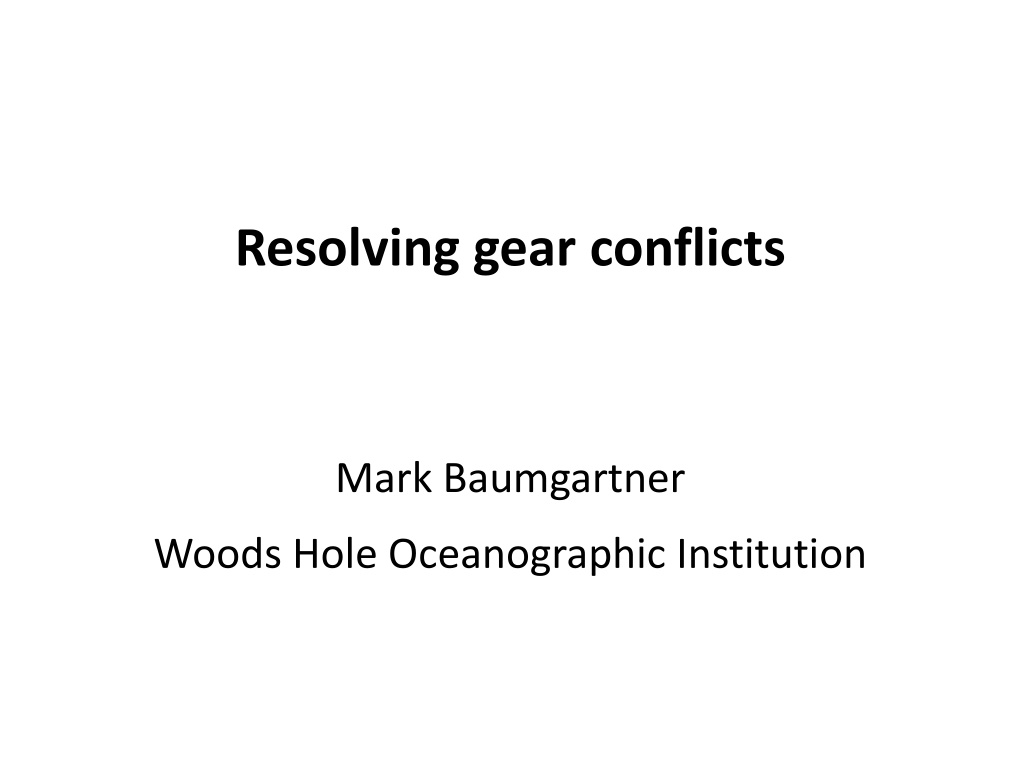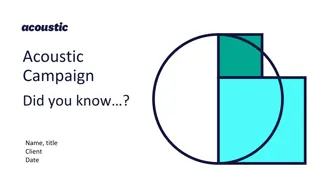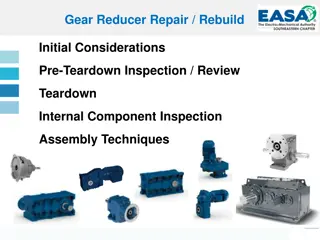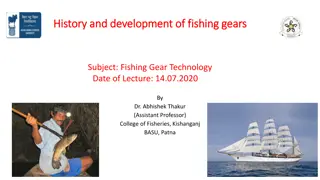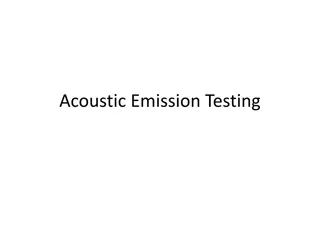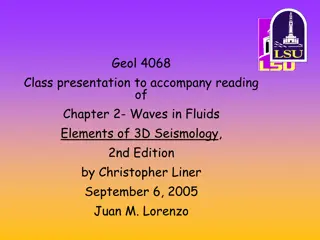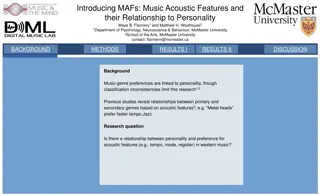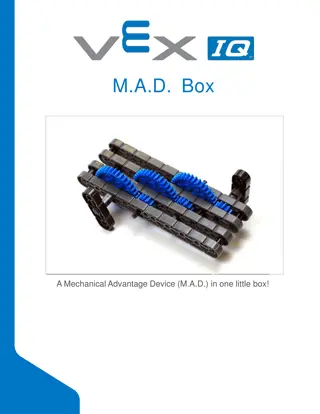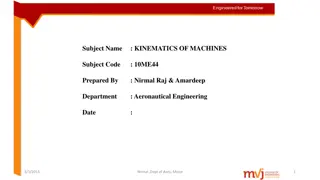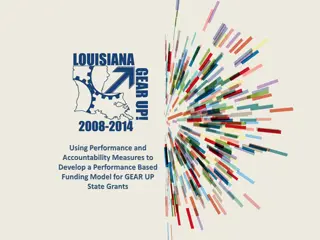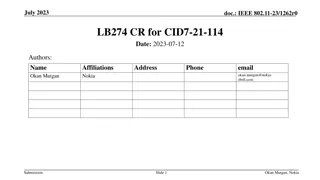Resolving Gear Conflicts Through Acoustic Technology
Novel approach using acoustic modems to mark the location of fishing gear and enable communication between fixed and mobile fishermen, addressing gear conflicts in fisheries. The system allows traps and trawls to report positions, owner information, and facilitate enforcement, promoting safe and efficient fishing practices while minimizing conflicts and promoting sustainability.
Download Presentation

Please find below an Image/Link to download the presentation.
The content on the website is provided AS IS for your information and personal use only. It may not be sold, licensed, or shared on other websites without obtaining consent from the author. Download presentation by click this link. If you encounter any issues during the download, it is possible that the publisher has removed the file from their server.
E N D
Presentation Transcript
Resolving gear conflicts Mark Baumgartner Woods Hole Oceanographic Institution
Rope-less fishing and gear conflict NMFS Concept Paper on rope-less fishing (Nov 2010): Problems with gear conflicts are the main reason why buoy lineless fisheries are not being conducted on a broad-scale basis. Any unmarked fixed gear would be susceptible to being towed through by mobile gear fisheries (bottom trawl, scallop dredge, etc.), and set over by other fixed gear and vice versa. Therefore, in order to encourage buoy lineless fishery operations, gear conflicts would need to be addressed.
Requirements The position of traps (singles) or trawls must be available to fixed and mobile fishermen The orientation of trawls must be available to fixed and mobile fishermen Registration/permit information must be available to enforcement
Additional considerations Trap/trawl positions should be available to non- owners only when on scene near the gear The identity of the trap/trawl owner should only be available to enforcement Reported trap/trawl positions should be associated with gear that is physically present on the sea floor
New Approach Acoustically mark the location of each trap (singles) or the ends of each trawl Enable the trap/trawl to report its position to fixed or mobile fishermen Enable the trap/trawl to report its owner s registration/permit information to enforcement Enable commercial chart plotters to display the positions of acoustically marked fixed gear Acoustic modems
Technology Acoustic modems allow data to be passed through water via acoustical waves the way cell phone modems allow data to be passed through air via radio waves Proven technology with several commercial manufacturers: Teledyne Benthos, Nortek, EvoLogics, Sonardyne, AquaSeNT, and WHOI (non- profit) Propose to use modems on traps and on ships to acoustically mark location of on-bottom gear
System Trap modems are fixed to each trap (singles) or the terminal traps in a trawl Surface modems are installed on boats that are fishing fixed or mobile gear Trap modems report information to passing boats equipped with surface modems Information is relayed to a data warehouse when a ship returns to shore Fishermen have on-shore access to information about their gear, enforcement has information about everyone s gear
System (continued) Trap modems also serve as the acoustic release to trigger whatever mechanism is responsible for bringing the gear to the sea surface Trap modems have integrated GPS receivers to record its last known surface position Trap modems can self-locate by ranging to passing ships
Trap deployment GPS satellite constellation Trap modem w/GPS Lift bag Note: trap not to scale
Trap deployment GPS satellite constellation
Data sent from ship to trap: Date/time Position of ship Ship identifier Data sent from trap to ship: Public data Last known position of trap (GPS/ranging) Private (encrypted) data Last surface date/time Fisherman s registration number Unique device identifier User-designated identification number Sensor data (e.g., trap occupancy)
Data sent from ship to trap: Date/time Position of ship Ship identifier Other vessel Data sent from trap to ship: Public data Last known position of trap (GPS/ranging) Private (encrypted) data Last surface date/time Fisherman s registration number Unique device identifier User-designated identification number Sensor data (e.g., trap occupancy)
Data sent from ship to trap: Date/time Position of ship Ship identifier Owner/Enforcement Data sent from trap to ship: Public data Last known position of trap (GPS/ranging) Private (encrypted) data Last surface date/time Fisherman s registration number Unique device identifier User-designated identification number Sensor data (e.g., trap occupancy)
Fisherman Data Warehouse Enforcement Regulators Data warehouse (cloud) operated by Private company Fisheries commission Government
Gear that moves from its deployment location All vessels equipped with surface modems will automatically report to the data warehouse the locations and private data of all the trap modems with which they communicated while at sea These data can be used to alert fishermen of 1. The fact that their gear has moved 2. The new location of their gear System can greatly reduce lost gear and time spent looking for lost gear Can significantly reduce ghost gear
Your trawl #29 has moved. It was detected by a ship 5 hours ago at 41 18.43 N, 70 36.22 W ???
Autonomous enforcement
Summary Trap modems can serve the same location marker function as surface buoys Allows owner, other vessels, and enforcement to locate gear on the sea floor Allows gear to be retrieved by owner only Allows gear to be relocated if it moves from the deployment location Allows enforcement to monitor gear location and ownership As easy to use as a GPS
